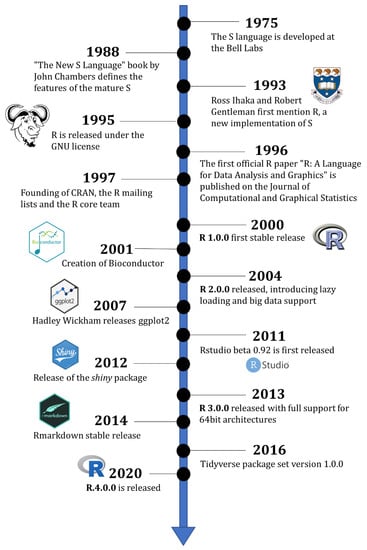4 Simple Techniques For Bioinformatics Tutor
4 Simple Techniques For Bioinformatics Tutor
Blog Article
Bioinformatics Tutor Can Be Fun For Everyone
Table of ContentsIndicators on Bioinformatics Tutor You Need To KnowUnknown Facts About Bioinformatics TutorWhat Does Bioinformatics Tutor Mean?Some Ideas on Bioinformatics Tutor You Need To KnowRumored Buzz on Bioinformatics Tutor
Initial job growth is fairly time-consuming, as it entails careful preparation of the topic, structuring of deliverables, and consideration of the skills and experience degrees of individuals. Once a job has been clearly specified and executed, it has the prospective to be recycled in future sessions with only small modifications to show updates in the area or accommodate distinctions in participant backgrounds. This makes project-based discovering a reliable and lasting mentor approach over time, especially in quickly evolving disciplines like bioinformatics.To make sure connection and reproducibility of understanding, giving common lab notebooks-- either electronic or physical-- is crucial. These notebooks function as collective logs where students can tape their development, code, methods, and results throughout the program. Not only do they strengthen learning by encouraging documents and representation, but they also act as post-course reference materials that individuals can speak with in future research or scholastic tasks.
Advisors play an important function in the success of project-based programs. Coaches also act as function models and inspire students to proceed seeking jobs in computational biology and relevant fields.
The Best Strategy To Use For Bioinformatics Tutor
Another trick facet of the learning process is supplying participants the opportunity to offer their work to others, specifically to an audience past their prompt task group. Last presentations or mini-conferences permit trainees to articulate their findings, obtain useful feedback, and gain self-confidence in connecting scientific material. This presentation element is typically a favorite amongst pupils, as it confirms their efforts and highlights the real-world relevance of their job.
Each iteration of the program was fine-tuned based on participant responses and advancing best techniques in pedagogy. Bioinformatics Tutor. These adjustments ensured that the core purposes-- hands-on discovering, cooperation, and applied analytic-- stayed intact while increasing the depth and breadth of subjects covered.
A notable visualization that captured individual sentiment was a word cloud generated from feedbacks to the 2014 end-of-course study. Individuals were asked, "What was the finest component of the course?" and their feedbacks were put together into a graphical word cloud. In this representation, the dimension of each word indicates exactly how regularly it was discussed, with words like "hands-on," "cooperation," "real-life problems," "support," and "interactive" appearing most plainly. This aesthetic responses strengthened the program's focus on experiential knowing and advisor assistance.
The payments of people such as Rustici, G., Orchard, S., Cowley, A., and Twells, R., in addition to other members of the EBI user-training-working group, were critical in refining the training course structure and content. Their insights helped form a comprehensive and versatile model that could be adjusted to different institutional and regional contexts.
A Biased View of Bioinformatics Tutor

Jones, Rasmussen, and Moffitt (1997) also promoted for interdisciplinary understanding via joint task job, noting its capability to simulate professional environments and prepare students for future scholastic or industry roles. In a thorough testimonial, Thomas (2000) analyzed several researches on PBL and wrapped up that pupils not only perform well academically but also develop a deeper understanding of the subject matter and improved teamwork skills.
In the context of bioinformatics education and learning, innovative strategies like classroom video games and simulation-based training have likewise been used. Schneider and Jimenez (2013) introduced the use of interactive video games to instruct biological information integration, allowing trainees to understand complex ideas through experiential learning. This kind of gamification matches the hands-on understanding highlighted in project-based training courses by introducing a component of fun and competitors, which can even more improve interaction.
Going back to the program reviewed here, the try this site lessons gained from explanation the application of project-based understanding in a bioinformatics establishing have more comprehensive effects for various other STEM fields. The methodology emphasizes not simply technical effectiveness, but likewise interaction, collaboration, and vital reasoning-- abilities that are increasingly valued in both academic community and sector.
What Does Bioinformatics Tutor Do?
The scalability of the program layout additionally makes it a viable model for various other institutions. With suitable customization based upon local needs, readily available resources, and individual accounts, the framework can be reproduced or adapted for use in other clinical domains. In addition, the inclusion of organized mentorship and analysis techniques aids ensure regular quality and quantifiable understanding outcomes.

Finally, project-based learning in bioinformatics uses an effective approach to mentor complicated, interdisciplinary web content in a way find more that is both available and intellectually boosting. By highlighting cooperation, sensible application, and essential query, such initiatives not only enhance private understanding but also add to the growing of a brand-new generation of knowledgeable and ingenious researchers.
The 3-Minute Rule for Bioinformatics Tutor

One more secret element of the discovering procedure is giving individuals the possibility to offer their work to others, especially to an audience beyond their immediate project team.In the more comprehensive instructional literary works, project-based knowing (PBL) has been extensively studied and confirmed as a reliable approach for advertising deep understanding, important reasoning, and transferable skills. Adderley et al. (1975) stressed the worth of job techniques in greater education and learning, keeping in mind that they advertise active learning and freedom. Schneider and Jimenez (2013) introduced the use of interactive video games to educate organic data integration, allowing trainees to realize complex principles with experiential knowing.
Report this page